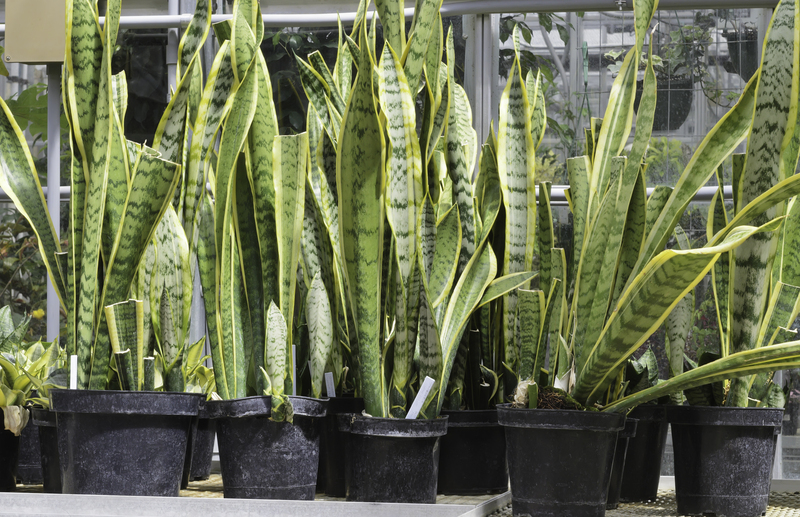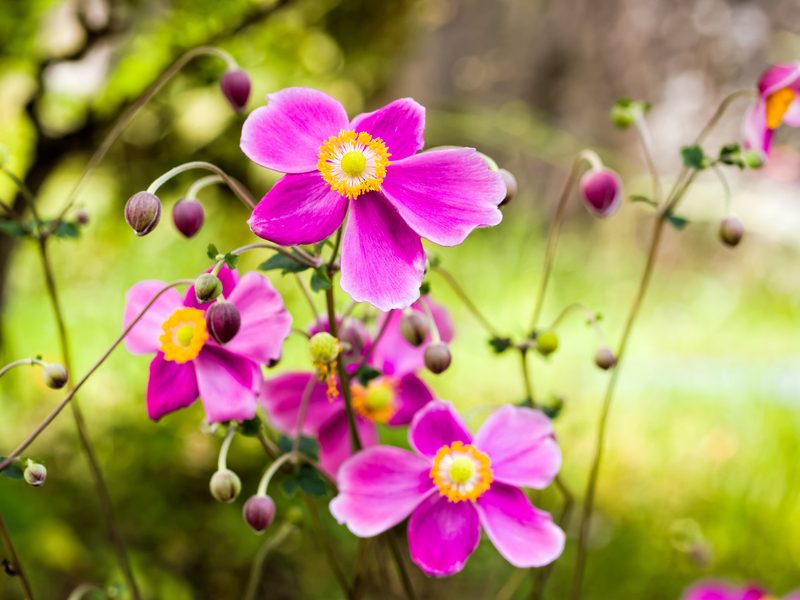Achieve a Weed-Free Garden: Try These 3 Expert Tips
Posted on 13/06/2025
Achieve a Weed-Free Garden: Try These 3 Expert Tips
If you're dreaming of a lush, vibrant garden that remains weed-free all season long, you're not alone. Weeds can quickly overtake flowerbeds, vegetable patches, and even pristine lawns, turning your hard work into a constant battle. But achieving a weed-free garden isn't as impossible as it seems. With guidance from gardening specialists and sustainable landscaping experts, you can keep your plot pristine, healthy, and beautiful. Below you'll find three proven tips to help you control weeds effectively and maintain an immaculate garden all year round.
Why Is a Weed-Free Garden Crucial?
Before diving into our top strategies, let's take a closer look at why prioritizing a weedless garden is so important:
- Weeds compete with your plants for essential nutrients, water, and sunlight, often stunting their growth and health.
- Many weeds serve as hosts for pests and diseases. Keeping them at bay safeguards your garden's ecosystem.
- A weed-free backyard enhances curb appeal, giving your home a tidy, inviting aesthetic.
- Fewer weeds means less maintenance work and more time to enjoy your flourishing plants!
Read on for detailed, actionable advice on how to achieve these benefits and reliably keep weeds out of the garden.

3 Expert Tips to Achieve a Weed-Free Garden
Leading horticulturists and successful home gardeners rely on a blend of strategies that work together to naturally suppress and remove weeds. Implement these three expert tips for a garden that looks professionally managed:
Tip 1: Mulch Your Beds for an Inhospitable Weed Environment
Mulching isn't just about appearance--it's one of the best tools for achieving a weed-free garden. Here's why:
- Mulch blocks sunlight. It acts as a barrier, preventing weed seeds in the soil from germinating and growing.
- It retains moisture for your plants, reducing the time spent on watering and weeding alike.
- Keeps the garden cooler and stabilizes soil temperature, providing the right conditions for your desirable plants.
How to Mulch Properly
- Select the Right Mulch: Organic options like shredded bark, compost, wood chips, or straw are popular. For pathways, landscape fabric with gravel works well.
- Apply at the Correct Depth: Spread mulch 2-4 inches thick, making sure to keep it away from the base of plant stems to avoid rot.
- Replenish as Needed: Organic mulch breaks down over time, so plan to top up annually for ongoing weed suppression.
Expert tip: Use pre-emergent weed barriers under your mulch for areas known to have persistent weed problems. This creates an additional line of defense to keep your flowerbeds weed-free.
Tip 2: Practice Consistent and Targeted Weed Removal
While stopping weeds before they start is ideal, you'll still encounter a few determined intruders over time. The secret to maintaining a weedless garden is consistency and smart technique.
Pulling Weeds Effectively
- Weed Early and Often: Young weeds come out easier, with less soil disturbance. Aim to weed weekly, especially after rain, when the ground is soft.
- Remove the Entire Root: Grasp weeds at ground level and pull steadily to extract the root, especially for perennials like dandelions or bindweed. Any root left in the ground can regrow.
- Use the Right Tools: Hand forks, hoes, and specialized weed pullers can make the job easier and protect your back.
Pro gardener insight: Don't compost weed seeds or roots unless your compost pile reaches high enough temperatures to kill them. Otherwise, you'll risk spreading them back into your garden.
Tip 3: Densely Plant and Cover Bare Soil to Crowd Out Weeds
Dense planting is a natural way to create a weed-resistant garden. When plants are close enough together, they shade the soil and leave little room for weeds to take hold.
Smart Planting Strategies
- Use Groundcovers: Fast-spreading groundcover plants like creeping thyme, clover, or sedum create a living mulch that suppresses weeds.
- Interplant Vegetables: Mix quick-growing crops (like lettuce or radishes) between slower ones to maximize ground coverage.
- Plan for Continuous Coverage: In the off-season, plant cover crops (such as clover or vetch) to protect the soil and crowd out winter weeds.
By working with nature and designing a lush, densely planted garden, you naturally limit weed space and help your preferred plants thrive.
Bonus Tactics for a Weed-Free Lawn and Garden Beds
Want to go the extra mile? Here are a few more weed control methods that pros use in tandem with the tips above:
- Utilize Drip Irrigation: Target water to your plants' roots and avoid feeding weeds that lurk between rows.
- Install Edging: Borders made from stone, metal, or plastic stop grass and other aggressive weeds from invading beds.
- Solarize Soil: Cover bare soil with clear plastic for 4-6 weeks during hot months to cook weed seeds before planting.
- Spot-Treat Problem Areas: For stubborn patches, use organic weed killers such as vinegar-based sprays or boiling water. Be careful to avoid your desirable plants.
- Avoid Uninvited Guests: Check nursery plants for weeds before transplanting, and clean tools/shoes after working in weedy areas.
Common Weed Types and How to Manage Them
Identifying the weeds in your garden is crucial for effective management. Here's how to handle a few common garden invaders:
- Dandelions: Perennial with deep taproots. Pull after rain, ensuring the whole root is removed, or use a dandelion fork.
- Crabgrass: Annual grass that thrives in open soil. Prevent with pre-emergent products and mulch.
- Purslane: Spreads aggressively by seed. Hand-weed before it flowers to halt reseeding.
- Nutsedge: Grass-like perennial. Requires careful removal of tubers and persistent monitoring.
- Chickweed: Sprouts quickly. Use mulch in early spring to suppress germination.
*For more targeted advice, consult a local extension office to identify weeds specific to your region and garden type.
Garden Maintenance Habits for Ongoing Weed Prevention
A low-maintenance, weed-free yard is totally achievable with a few ongoing habits:
- Inspect your garden weekly and remove newly sprouted weeds promptly.
- Keep mulch topped up as it decomposes and shifts with weather changes.
- Divide and thin perennials when needed, leaving no gaps for weeds.
- Rotate crops in vegetable gardens to discourage persistent weed cycles.
- Encourage healthy soil with compost and organic matter--vigorous plants are better at suppressing weeds!
Eco-Friendly and Pet-Safe Weed Prevention
If you have kids or pets playing in your garden, you'll want to avoid harsh chemicals or toxic herbicides. Here are a few organic weed control tips:
- Spot treat with boiling water for driveways and gravel paths.
- Use a vinegar-salt-dish soap spray for patios and pavers (test first for plant safety).
- Hand-weed regularly and keep grass cut slightly higher to shade out emerging weeds.
- Consider natural weed barriers made from cardboard or newspaper under mulch.
Always follow safety guidelines when using any weed control product, and consult local experts to ensure new methods align with your garden's needs.

Frequently Asked Questions: Getting and Keeping a Weed-Free Garden
- How often should I weed my garden to keep it weed-free?
Answer: Weekly weeding sessions, especially after rain, make a significant difference. The more often you do it, the less time each session takes. - Is it possible to have a totally weed-free garden?
Answer: While eliminating every single weed is unlikely, these tips will reduce outbreaks to near-zero and make your garden visibly weedless. - What is the easiest way to prevent weeds naturally?
Answer: Mulching and dense planting are two of the easiest, most sustainable prevention methods. - Should I use landscape fabric under mulch?
Answer: For high-weed areas, yes--it helps block persistent weeds. However, organic mulches alone are usually sufficient for most beds.
Conclusion: Your Weed-Free Garden Awaits!
A truly weed-free garden is the reward of a well-planned and regularly maintained landscape. By applying thick mulch, weeding consistently, and planting closely, you'll outsmart weeds and reclaim your yard's beauty. Remember, it's consistency--not just effort--that keeps weeds out for good.
Ready to transform your garden? Start implementing these expert strategies today and enjoy a weed-free, thriving outdoor space for years to come. For even more tips on sustainable gardening and weed prevention, subscribe to our blog or contact a local horticulturist.

